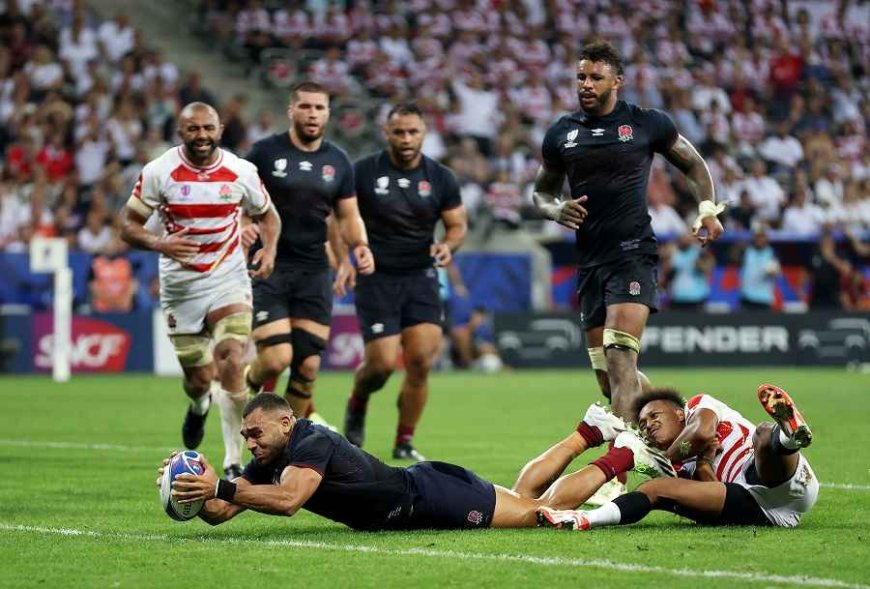Unlocking the Intricacies of English Rugby Terminology
Rugby, a physically demanding and exhilarating sport, has captured the hearts of millions across the globe. Whether you're a passionate fan or just beginning

Rugby, a physically demanding and exhilarating sport, has captured the hearts of millions across the globe. Whether you're a passionate fan or just beginning to explore the world of rugby, delving into its unique terminology can deepen your appreciation for this captivating game. In this article, we'll embark on a journey to explore the fascinating and often nuanced lexicon of English rugby, helping you gain a firm grasp of the essentials.
Rugby Union vs. Rugby League: The Two Titans:
The world of rugby is divided into two prominent codes: Rugby Union and Rugby League. Distinctions between them primarily revolve around the number of players per team (15 in Rugby Union, 13 in Rugby League) and variations in gameplay rules.
Try: The Quest for Glory:
A try is the pinnacle of scoring in rugby. To earn a try, a player must carry or ground the ball within the adversary's in-goal area, known as the try zone, while retaining possession.
Conversion: Precision in Motion:
Following the ecstasy of a try, the scoring side has the opportunity to undertake a conversion—a challenging kick executed through the goalposts and over the crossbar, yielding two points in the realm of Rugby Union.
Penalty: Navigating the Maze of Offenses:
A penalty is the reward bestowed upon a team when the opposing side commits a transgression. It provides the option to kick for goal, aim for a strategic kick to touch, or opt for a scrum.
Scrum: A Collective Power Struggle:
The scrum serves as a means to recommence play following a minor breach. Eight players from each side unite in a coordinated push, vying for possession of the ball.
Lineout: Aerial Ballet of Skill:
A lineout is a method for rekindling action when the ball ventures beyond the touchline. Two teams vie for the privilege of catching the ball as it is thrown back into play.
Maul: The Art of Controlled Chaos:
A maul takes shape when a player in possession of the ball is encircled by one or more opponents, with one or more of their comrades latching onto the ball carrier. The primary objective is to propel forward while safeguarding the ball.
Ruck: The Ground Battle:
A ruck transpires when the ball descends to the turf, and players from both sides contend for ownership by employing their feet to "ruck" the ball back to their own side.
Scrum-half (Halfback): The Quarterback of Rugby:
The scrum-half assumes a pivotal role, serving as the linchpin who initiates the scrum, inaugurates play from the ruck or maul, and often serves as a conduit between the forwards and backs.
Fly-half (First-Five): The Strategic Tactician:
The fly-half is typically the team's chief strategist. They are entrusted with crucial decision-making, distribution of the ball to teammates, and frequently taking on the role of the team's kicker.
Fullback: The Last Line of Defense:
Positioned at the rear of the defensive line, the fullback shoulders the responsibility of fielding high kicks, making crucial tackles, and initiating counter-attacks.
Winger: Speed Demons of the Game:
Wingers, often the fleetest members of the squad, take up positions on the outer flanks. Their role entails scoring tries by sprinting down the sideline with electrifying speed.
Forward Pack: The Engine Room of Power:
The forwards, affectionately referred to as the forward pack, consist of the bulkier, more physical players on the team. They are instrumental in executing set-piece maneuvers such as scrums, lineouts, and mauls.
Backs: The Agile Orchestra:
The backs, characterized by their agility and nimbleness, operate within the realm of open play. This category encompasses positions like fly-half, inside center, outside center, and the back three (fullback and wingers).
Red Card: The Grim Farewell:
A red card marks a player's expulsion from the game due to a grave violation. The team is left with one player short for the remainder of the match.
Yellow Card: The Temporary Setback:
A yellow card is a temporary banishment following a less severe infraction, typically sidelining the player for ten minutes.
Knock-On: The Fumble of Fate:
A knock-on eventuates when a player loses control of the ball, causing it to propel forward from their grasp. Consequently, this infraction triggers the awarding of a scrum in favor of the opposing side.
Offside: The Boundary Breach:
Offside occurs when a player positions themselves ahead of a teammate who is carrying the ball, a transgression that can lead to a penalty in favor of the opposition.
Drop Goal: The Midfield Marvel:
A drop goal is a strategic feat achieved by executing a kick through the goalposts during open play, securing three points in the domain of Rugby Union.
High Tackle: The Unwelcome Embrace:
A high tackle transpires when a player tackles an opponent above the shoulder line—an illegal act that often results in a penalty.
As we journeyed through the unique tapestry of English rugby terminology, I hope you've gained a newfound appreciation for the intricacies of this remarkable sport. Armed with this knowledge, whether you're an avid spectator or contemplating joining the rugby fray, you'll be better equipped to savor the thrill and complexity that rugby has to offer. So, don your rugby jersey, make your way to the nearest match, and cheer for your chosen team with a deeper understanding of the game's rich vocabulary and traditions.
